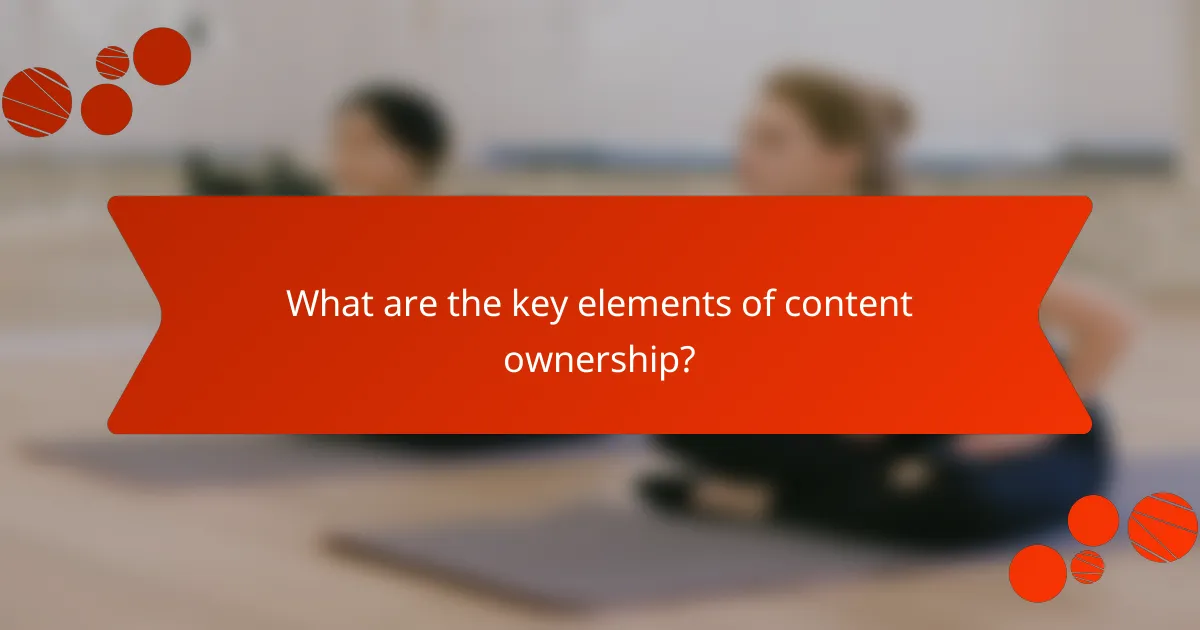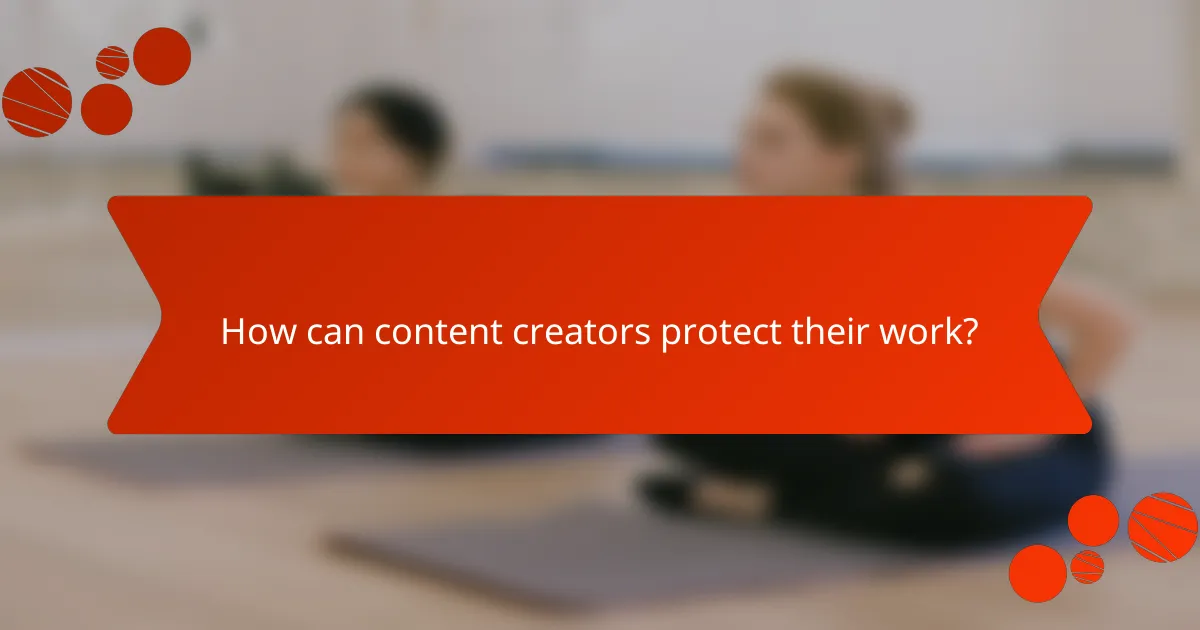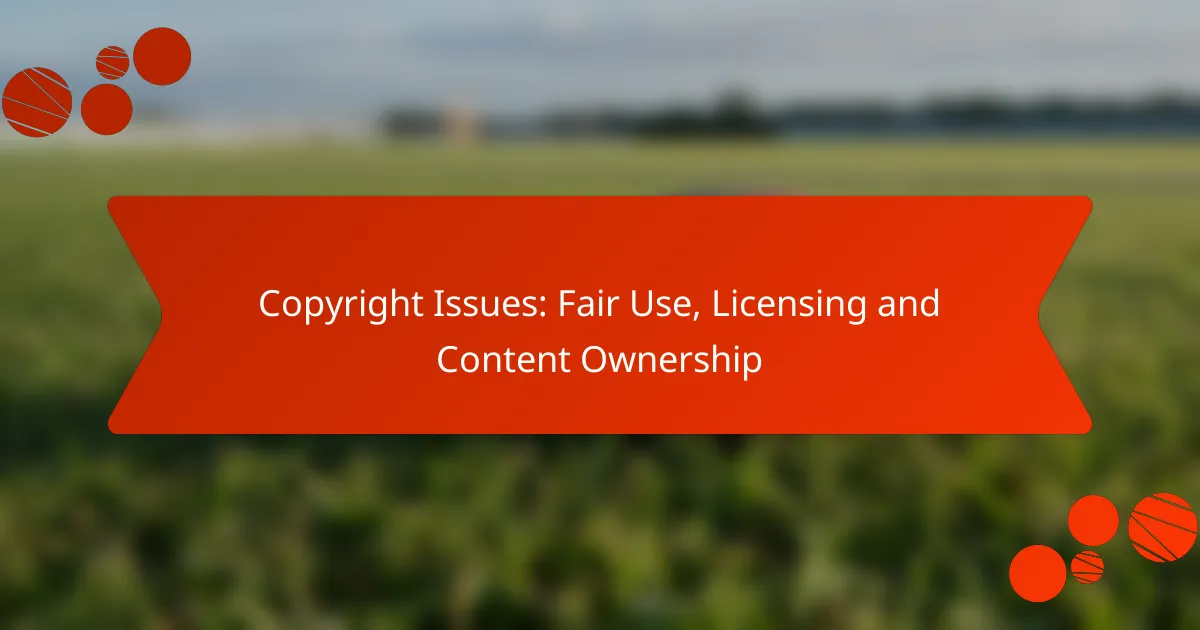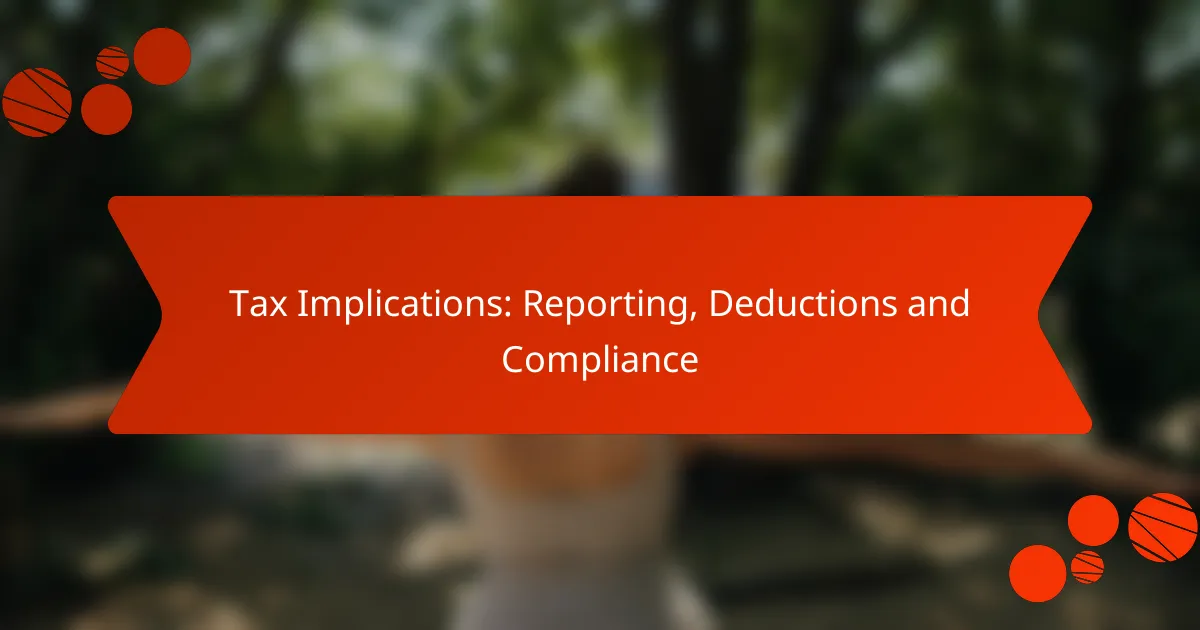Copyright issues are a critical concern for content creators, encompassing fair use, licensing, and ownership agreements. By understanding these concepts, creators can protect their original works while also navigating the legal landscape of using others’ content. Fair use provides a framework for limited use of copyrighted material, while various licensing options allow for tailored rights management to suit different needs.

What are the copyright solutions for content creators in the US?
Content creators in the US can navigate copyright issues through various solutions, including fair use, licensing, and ownership agreements. Understanding these options helps protect their work while enabling them to utilize others’ content legally.
Fair Use Guidelines
Fair use allows limited use of copyrighted material without permission under specific circumstances. This typically applies to commentary, criticism, news reporting, teaching, or research, and is evaluated based on factors like purpose, nature, amount used, and market effect.
Creators should consider the transformative nature of their work and whether it adds new expression or meaning. For instance, using a short clip from a film for a review may qualify as fair use, while using the entire film would likely not.
Licensing Options
Licensing enables creators to use copyrighted material legally by obtaining permission from the rights holder. This can be done through exclusive or non-exclusive licenses, which specify how the content can be used and any associated fees.
When considering licensing, creators should assess the scope of use, duration, and territorial rights. For example, a music license for a YouTube video may allow for streaming but not for commercial distribution.
Content Ownership Agreements
Content ownership agreements clarify who owns the rights to created works, especially in collaborative projects. These agreements should outline contributions, rights, and revenue sharing to prevent disputes later on.
It’s essential to document these agreements in writing, specifying the ownership percentages and any conditions for future use or modifications. For instance, a co-authored article should explicitly state how profits from publication will be divided.
Creative Commons Licenses
Creative Commons licenses provide a flexible way for creators to share their work while retaining certain rights. These licenses range from allowing any use with attribution to restricting commercial use or derivative works.
Creators can choose a license that fits their goals, such as the Attribution-NonCommercial license, which allows others to use their work non-commercially as long as they credit the original creator. This can help expand reach while protecting their rights.
DMCA Takedown Procedures
The Digital Millennium Copyright Act (DMCA) provides a process for copyright holders to request the removal of infringing content from online platforms. This involves submitting a takedown notice to the service provider, detailing the copyrighted work and the infringing material.
Creators should ensure their notices are accurate and comply with DMCA requirements to avoid potential counter-notices. It’s advisable to keep records of all communications and responses related to the takedown process for future reference.

How does Fair Use apply to online content?
Fair Use allows limited use of copyrighted material without permission, particularly in online contexts. It is essential to understand how this legal doctrine applies to various types of content, as it can protect creators while also balancing the rights of original authors.
Transformative Use Criteria
Transformative use is a key consideration in fair use cases. A work is considered transformative if it adds new expression, meaning, or message to the original content. For example, a parody that comments on the original work can qualify as transformative, whereas simply reposting the original without alteration typically does not.
To determine if a use is transformative, consider whether it changes the purpose or character of the original work. This can include altering the format, context, or audience of the content.
Commercial vs. Educational Use
The purpose of use significantly influences fair use determinations. Educational uses, such as teaching materials or scholarly research, are more likely to be considered fair use compared to commercial uses that aim for profit. For instance, using a short clip from a film for a classroom discussion may qualify as fair use, while using the same clip in a promotional video for a business may not.
However, commercial use does not automatically negate fair use. Courts often weigh the nature of the use alongside other factors, so it’s crucial to assess the overall context.
Factors Influencing Fair Use Decisions
Several factors influence fair use decisions, including the purpose of the use, the nature of the original work, the amount used, and the effect on the market for the original work. Each case is assessed on its own merits, making it important to analyze these factors carefully.
- Purpose of Use: Non-commercial and educational uses are favored.
- Nature of the Original Work: Creative works receive more protection than factual works.
- Amount Used: Using a small portion of a work is more likely to be fair use.
- Market Effect: If the new use negatively impacts the original’s market, it is less likely to be fair use.
Understanding these factors can help creators navigate fair use and make informed decisions about their content.

What licensing options are available for digital content?
Digital content creators have several licensing options to choose from, each serving different needs and rights management. The main types include exclusive licenses, non-exclusive licenses, royalty-free licenses, and works in the public domain.
Exclusive vs. Non-Exclusive Licenses
Exclusive licenses grant one party the sole rights to use the content, meaning the creator cannot license it to anyone else. This type of license often commands a higher fee due to its restrictive nature.
In contrast, non-exclusive licenses allow multiple parties to use the same content simultaneously. This option is typically more affordable and can generate ongoing revenue for the creator through multiple agreements.
Royalty-Free Licensing
Royalty-free licensing permits users to pay a one-time fee for the right to use the content without ongoing royalties. This model is popular for stock images, music, and videos, making it cost-effective for users who need content without recurring costs.
However, it’s essential to read the licensing terms carefully, as some royalty-free licenses may have restrictions on usage, such as limits on distribution or modification.
Public Domain Works
Public domain works are not protected by copyright and can be freely used by anyone without permission or payment. These works may include older literature, art, and government publications.
While using public domain content is cost-effective, it’s crucial to verify that the work is indeed in the public domain, as copyright laws can vary by country and specific works may still have restrictions.

What are the key elements of content ownership?
Content ownership encompasses the rights and responsibilities associated with creative works. Key elements include copyright, licensing agreements, and the ability to transfer rights, which collectively define who can use, distribute, and profit from the content.
Copyright Registration Process
The copyright registration process involves submitting an application to the relevant government authority, such as the U.S. Copyright Office. This typically requires providing a copy of the work, a completed form, and a fee, which can range from a few dozen to several hundred dollars depending on the type of work.
Once registered, the copyright holder gains legal advantages, including the ability to sue for infringement and eligibility for statutory damages. It’s advisable to register as soon as possible after creating a work to ensure maximum protection.
Joint Ownership Agreements
Joint ownership agreements occur when two or more parties create a work together, sharing rights and responsibilities. These agreements should clearly outline each party’s contributions, rights to use the work, and how profits will be divided.
Without a formal agreement, disputes can arise over usage and revenue. It’s essential to document the terms in writing to avoid misunderstandings and ensure all parties are aware of their rights.
Transfer of Rights
Transferring rights involves legally assigning ownership or specific usage rights of a work to another party. This can be done through contracts that specify the scope, duration, and compensation for the transfer.
When transferring rights, clarity is crucial. Specify whether the transfer is exclusive or non-exclusive, and consider including terms for future royalties or reversion of rights if the work is not utilized. Always consult legal advice to ensure the agreement is enforceable and protects your interests.

How can content creators protect their work?
Content creators can protect their work through copyright registration, clear licensing agreements, and proactive monitoring for unauthorized use. These measures help ensure that creators maintain ownership and can take action against infringement.
Copyright Notices
Copyright notices serve as a clear indication that a work is protected under copyright law. Including a notice, such as “© [Year] [Owner’s Name],” informs others of the ownership and the year of creation, which can deter unauthorized use.
While not legally required, a copyright notice strengthens a creator’s position in case of disputes. It is advisable to place the notice prominently on all published works, including digital content, to maximize visibility.
Monitoring for Infringement
Regularly monitoring the internet for unauthorized use of your content is essential for protecting your rights. Tools and services are available that can help track where your work appears online, including reverse image search engines and plagiarism detection software.
Setting up Google Alerts for your name or work titles can also help you stay informed. Being proactive allows you to address potential infringements quickly before they escalate.
Legal Recourse for Violations
If you discover that your work has been infringed, you have several legal options. You can send a cease-and-desist letter to the infringer, requesting that they stop using your content. This letter can often resolve the issue without further action.
If the infringement continues, you may consider filing a lawsuit for damages. Legal action can be costly and time-consuming, so weigh the potential benefits against the expenses involved. Consulting with an intellectual property attorney can provide guidance tailored to your situation.



